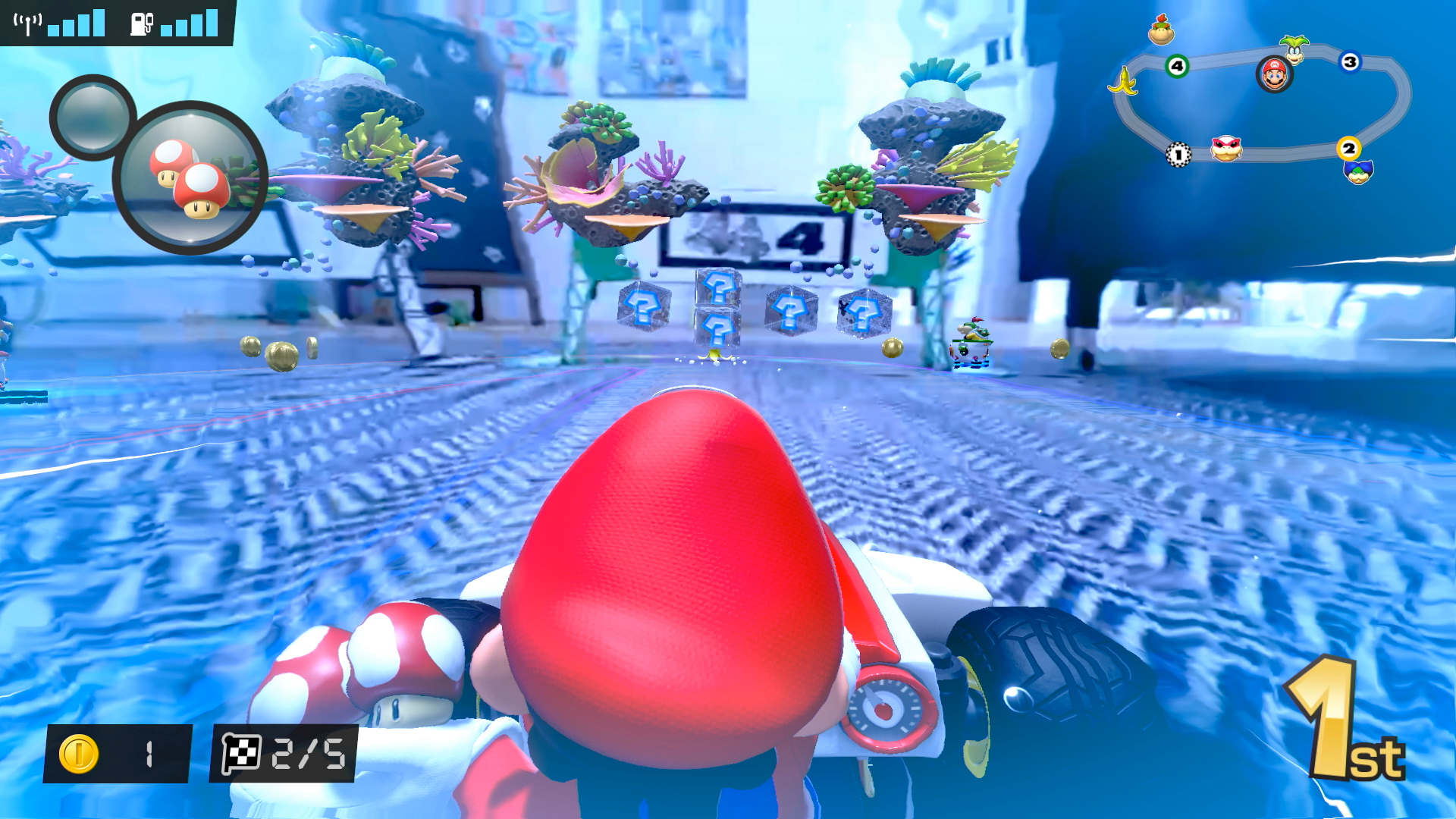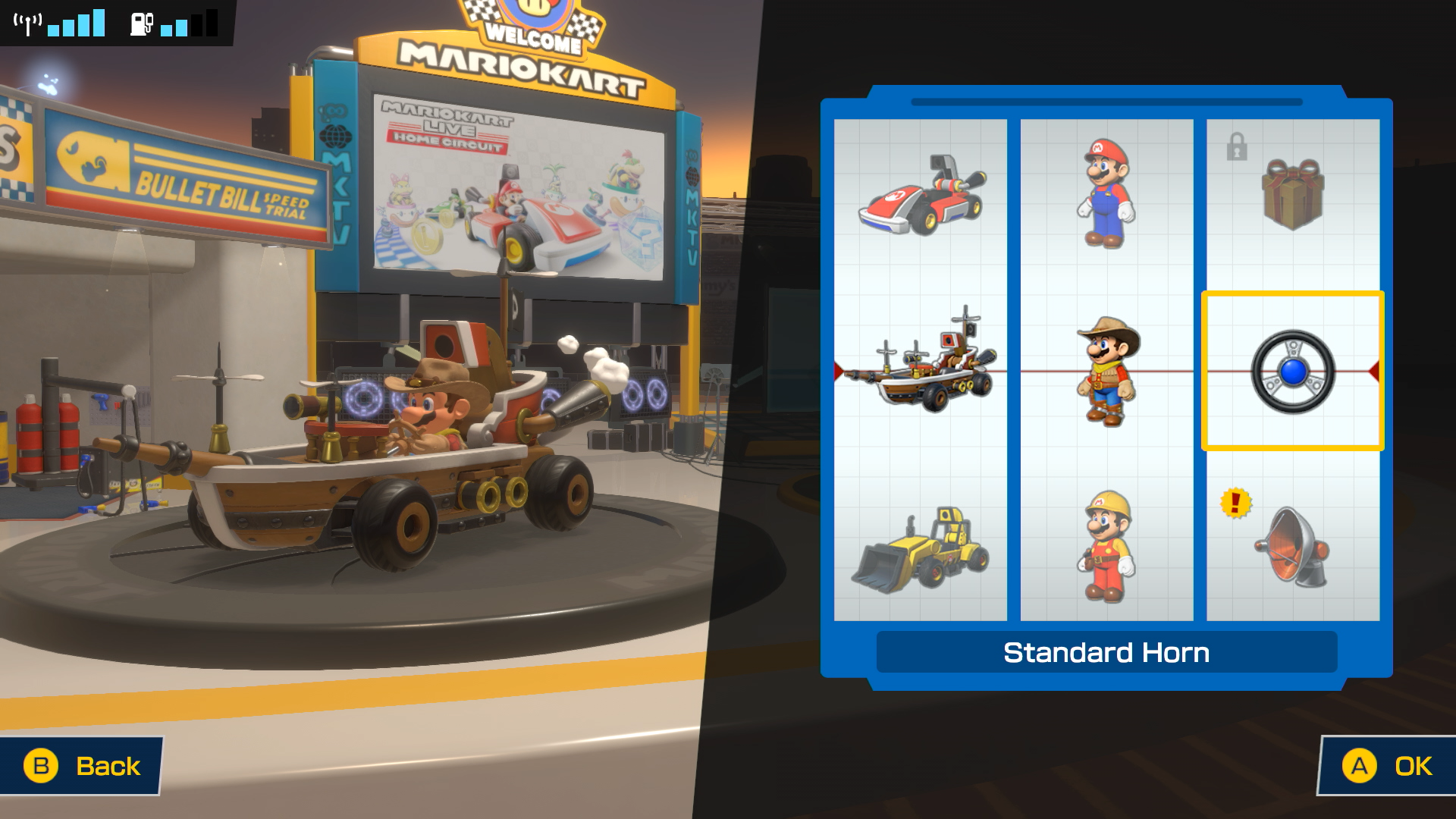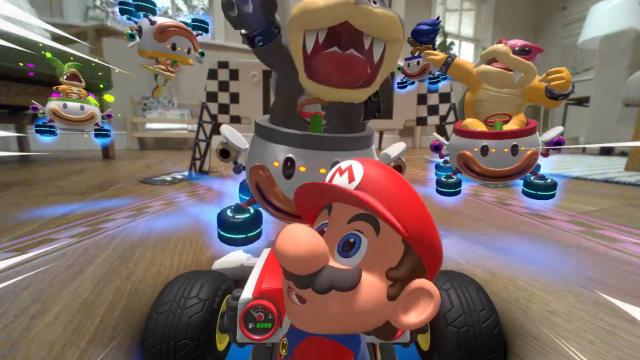Earlier this week Nintendo let me preview its upcoming attempt to graft Mario Kart onto remote control cars through augmented reality. It’s called Mario Kart Live: Home Circuit, and it looks like a lot of fun. It also looks very niche.
Because of the ongoing pandemic I didn’t actually get to play Mario Kart Live: Home Circuit, which was first revealed last month and comes out October 16. Instead, I watched a powerpoint presentation about the game, which was co-developed with Velan Studios, complete with pre-recorded video demonstrations. As a result, I have no idea what the game actually feels like to play, or what kinds of unexpected joys or technical issues it might generate once out in the wild.
[referenced id=”1072427″ url=”https://www.kotaku.com.au/2020/09/everything-nintendo-just-announced-in-its-mario-showcase/” thumb=”https://www.gizmodo.com.au/wp-content/uploads/sites/3/2020/09/04/sph0u3hil7k3nfnkabts-300×168.png” title=”Everything Nintendo Just Announced In Its Mario Showcase” excerpt=”In celebration of Mario’s 35th anniversary, Nintendo released a Super Mario Bros. Direct stuffed with all Mario everything. Here’s a look at all the goodies the company announced.”]
What I can say is that it looked a lot more fun than the mobile spin-off Mario Kart Tour and also a lot more work to set up than just playing Mario Kart 8 Deluxe on the Switch. Each Home Circuit set costs $US100 ($139) and comes with four cardboard gates, two arrow sign boards, a charging cable, and a remote-controlled cart (there’s one featuring Mario and one sporting Luigi). The game itself is downloaded from the eShop for free, but won’t work unless you first use your physical kart to scan a QR code.
It’s enough to construct a race course anywhere on a floor and then play on it as if it were a standard Mario Kart track. The kart has a camera mounted on it, and what that camera sees is streamed to the Switch’s screen or the TV to which it is connected. AS a result, the race plays out on the screen, complete with computer-controlled opponents, item blocks, obstacles, and a host of other visual effects all superimposed over that camera feed. People who aren’t playing the game might be able to watch the car whiz around the room, but the person playing is keeping their eye on the screen.
To create courses all you need to do is to set up the four gates, go into creator mode, and then drive through the gates in a particular order before looping back to the first one. The game then generates a race track based on the path your kart took, which also becomes what you race through when competing in in time trials and grand prixs. A spokesperson for Nintendo said the approximate max size race course you could make is 15 by 4.57 m, but within that space you have a lot of room to get creative. The courses I was shown were all in a living room, with karts driving over carpets and around pieces of furniture. But it’s not hard to imagine some folks getting really into the model car aspect of Home Circuit to create permanent race courses in their basement or attic with lots of physical obstacles and real-life scenery.

From what I saw of the actual races themselves, it looks pretty similar to what you’d expect from your average Mario Kart game. There are item blocks that spawn things like red shells and Bullet Bills. Hazards like piranha plants, floating amps that shock you, and chomps stalk the gates trying to attack players driving by. You can even get speed boosts by sliding and creating sparks for a certain amount of time, just as you would in the main series. Where Home Circuit differs is in its physicality.
You only need to drive under each gate for the game to register your progress, and going off course won’t slow you down. But driving over carpets or getting stuck under a couch leg will. Similarly, if you get bumper-karted by another real-life person (Home Circuit supports up to four-player local co-op) you can get knocked off course. To take it a step further, one of Nintendo’s video demonstrations involved someone lining a track with blocks to keep playingers from cheating and cutting corners, as well as little stacks of cardboard boxes that act like mini-roadblocks for players who try to take a turn too fast.
On the virtual end you can customise what types of enemies and item blocks appear at different gates. From there, each Grand Prix Cup adds more effects. Rain during a Mushroom Cup course spawns mushrooms everywhere, with coins hidden behind them. Sandstorms in the Star Cup will mess with your steering. The snow levels, meanwhile, will generate freezies that lock your kart in place for a bit if you hit one. As you complete these Cups, starting at 50cc and going up to 200cc, you’ll unlock their effects to add to your inventory of customisation for further course creation down the road.
Home Circuit also contains a suite of unlockable virtual customisations for your kart, horn, and driver. Unlike in previous games, coins don’t help you speed up, but they can be spent to gain access to random cosmetics like a suit of armour for Mario to wear or a construction vehicle honk inspired by Super Mario Maker 2. According to Nintendo, only the players who wear the outfits will see them in their game, but the honking sounds will be audible to everyone playing together.

One big question around Home Circuit is how well the karts themselves will function and what sort of creativity they’ll be able to unleash. A spokesperson for Nintendo pointed out that, while the karts are pretty good on flatter carpets, they don’t play nice with shag or tassels. I’ll also be curious to see what kind of inclines they can handle. It’s unclear if the game can detect significant changes in elevation, but I imagine many kids’ first instinct might be to set up daredevil stunt ramps. .
Another question is how elegantly the whole thing will fold into people’s everyday lives. I was told that courses don’t automatically save, and that every time you take down you’ll need to reconstruct your course within the game when you take them back out again. Also, while Nintendo suggested a “small bedroom” would be big enough for 50cc and 100cc races, it said a 10 by 3.66 m space is recommended for 150cc and up in order for karts to make the turns at the higher speeds. Home Circuit’s first trailer shows karts racing around a room that’s optimally decorated for a Mario Kart race course, complete with the couch placed directly in the centre of the room.
It seems like a lot of people might have to do a lot of rearranging in their homes in order to get the most out of Home Circuit, and even then taking it out and setting it up might be more in-line with preparing for a board game night than simply busting out a controller to play Mario Kart on the TV. In the end, Nintendo’s presentation left me excited by the prospect of racing a group of friends in one of our basements on a course with some real-life hazards — banana peels, a puddle, my one-year-old son — that Home Circuit’s user manual probably would advise against. What it didn’t do was convince me that that experience would be worth investing the time and money to play a novel but otherwise familiar version of a game I’ve already played for decades.

Leave a Reply